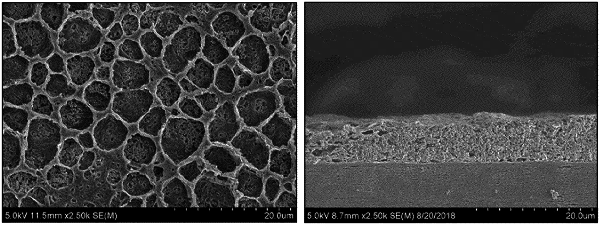| CPC H01M 50/489 (2021.01) [H01M 10/052 (2013.01); H01M 50/417 (2021.01); H01M 50/426 (2021.01); H01M 50/434 (2021.01); H01M 50/443 (2021.01); H01M 50/446 (2021.01); H01M 50/451 (2021.01)] | 10 Claims |

|
1. A separator for a lithium secondary battery, comprising:
a porous substrate; and
a porous coating layer disposed on at least one surface of the porous substrate and comprising inorganic particles and a binder polymer,
wherein
the binder polymer comprises a terpolymer including a repeat unit derived from vinylidenefluoride (VDF), a repeat unit derived from hexafluoropropylene (HFP) and a repeat unit derived from chlorotrifluoroethylene (CTFE),
the terpolymer includes 65 to 90 weight % of the repeat unit derived from VDF, 1 to 28 weight % of the repeat unit derived from HFP and 5 to 28 weight % of the repeat unit derived from CTFE with respect to a total amount of the terpolymer,
the porous coating layer comprises interstitial volumes between the inorganic particles, the interstitial volumes being voids between the inorganic particles that are connected to each other by the binder, and
the separator has adhesiveness ranging from 30 gf/25 mm to 150 gf/25 mm and machine direction (MD) thermal shrinkage of 1 to 18% and transverse direction (TD) thermal shrinkage of 1 to 17%.
|